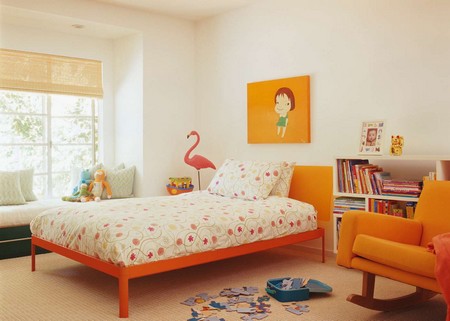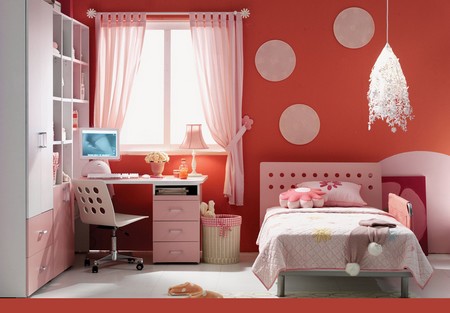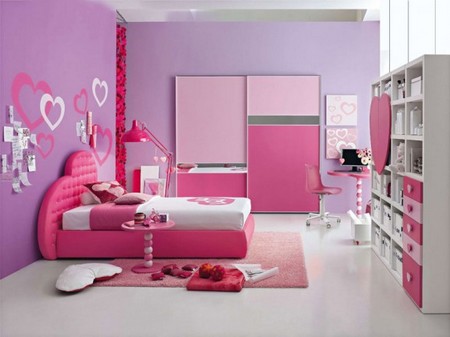Best Way to Create an Allergy-Free Children’s Room
Parents usually put a lot of effort into decorating their children’s rooms to make them interesting and stimulating. But when there is an allergic child to consider it is also necessary to create the type of environment that will minimize symptoms.
Many of the measures dealt with here are targeted at reducing the level of dust-mite allergen, which is a common factor in allergic asthma. But before undertaking any changes you should first consult your doctor and establish that your child is, in fact, sensitive to mite allergen.
Mite-allergen control measures should be carried out in all the rooms that are used frequently by allergic children, especially their bedrooms. You should apply the measures on all the beds or bedding in the room, even if other children sharing the room do not have any symptoms of allergy. If your child’s allergy is severe, you may have to consider finding a new home for any pets, especially cats. At the very least, all pets should be excluded from children’s rooms or their main play areas, and kept outside as much as possible.
Couples with family histories of allergy, or who suffer from allergies themselves, may want to consider making their home into a low-allergen environment before starting a family. Research has shown that children who are born into families with a history of allergies are more likely to develop allergies, and that the level of allergen exposure during infancy is important in sensitizing a child and in the development of allergic disease.
Windows
- Air the room by opening the window in the morning, and turn back the bedclothes. Keeping the window slightly open at night helps to air the room, thus reducing humidity and discouraging mould growth and mites.
- Keep windows shut in the early morning and early evening during the pollen season if your child has a pollen allergy.
- Consider installing a single-room ventilation unit if it is difficult to air the room naturally.
- Use roller blinds or shades in preference to curtains or drapes.
Furniture and furnishings
- Keep furniture to an absolute minimum to prevent a build-up of dust. Remove soft-upholstered furniture from the bedroom and replace it with furniture made from plastic or wood – materials that dust mites cannot colonize.
- Cover all cushions and pillows with barrier covers and wash ordinary covers regularly using a method that kills house-dust mites.
Ornaments and books
- Keep shelves, wmdowsills, and worktops or counters clear and dust free by vacuuming or damp dusting regularly. Less clutter means less dust and easier cleaning.
- Store books and ornaments behind glass doors to prevent dust collecting on them.
- Minimize posters and other wall decorations, such as pictures and pennants, which will all collect dust.
Toys
- Keep soft toys and comfort blankets to a minimum – they can hold concentrations of dust mites sufficient to contribute to a child’s asthma or eczema.
- Destroy mites by freezing soft toys or comfort blankets in a freezer for at least 3 4 hours.
- Don’t let children play with modelling clay or chalk if there are any signs of it irritating their skin.
- Tidy toys away in cabinets or in toy chests at the end of every day to help keep them free from dust.
- Discard unwanted or broken toys to keep clutter to a minimum.
- Replace carpets with a hard-surface flooring material, such as linoleum or wood.
- Vacuum daily, even if a hard-surface flooring material is present.
- Use washable cotton rugs instead of carpeting.
Walls
- Use quick-drying, water-based paint or low-VOC paint.
- Keep children out of the room while painting and until the paint has dried. Ventilate the room until all fumes have gone.
Clothing
- Wash clothes in non-biological products or those made for sensitive skin.
- Use cotton mittens to prevent children scratching at their eczema while they are asleep.
Beds
- Enclose all mattresses in barrier covers, not just the mattress of the allergic child.
- Make sure that the allergic child sleeps on the top bunk bed, if you have them.
- Keep to simple bed designs, which collect less dust, with a slatted wooden or metal base to allow air to circulate underneath the mattress.
Lampshades
- Select wipable lampshades, such as vinyl or plastic, that can easily be cleaned. Fabric shades retain dust.
Bedding
- Cover duvets and pillows with anti-mite barrier covers.
- Wash all bed linen weekly at temperatures of at least 56°C/133°F to kill mites and remove their allergen. Or add benzyl benzoate solution to washes at lower temperatures, followed by thorough rinsing.
- Use cotton sheets and blankets for children with eczema – these seem to be more comfortable than synthetic or wool fibres. Synthetic fabrics may increase sweating and wool fibres can be a skin irritant.
Categories
Advertisements
Recent Articles
 How to Understand Bed Sizes – A Small Guide
How to Understand Bed Sizes – A Small Guide How to Select Some Must Have Kitchen Accessories
How to Select Some Must Have Kitchen Accessories Best Way to Change a Car Tire
Best Way to Change a Car Tire Best Way to Write an Affirmation
Best Way to Write an Affirmation Best Way to Take Charge of Your Financial Life
Best Way to Take Charge of Your Financial Life Best Way to Survive a Party When You Don’t Know Anyone
Best Way to Survive a Party When You Don’t Know Anyone Best Way to Stop Self Sabotaging Yourself
Best Way to Stop Self Sabotaging Yourself Best Way to Start Journal Writing
Best Way to Start Journal Writing Best Way to Speak with a Powerful Voice
Best Way to Speak with a Powerful Voice Best Way to Simplify Your Life
Best Way to Simplify Your Life Best Way to Respond to a Put-Down
Best Way to Respond to a Put-Down Best Way to Reduce Acne Breakouts
Best Way to Reduce Acne Breakouts Best Way to Recover from Dining Disasters
Best Way to Recover from Dining Disasters Best Way to Quit Your Job Gracefully
Best Way to Quit Your Job Gracefully Best Way to Make Your Own Website
Best Way to Make Your Own Website




Leave a Reply